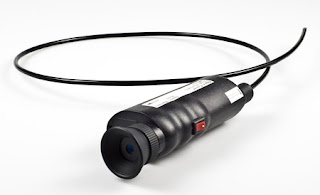Portable flexible fiberscope fast facts:
- Inspect and explore inaccessible areas using one-hand operation.
- Clearly focus on objects as close as 1.2 inch to 15 inch away.
- Mirror adapter 70, 90, 120° view for various angled viewing add even more inspection value.
- Integrated focus ring for smooth, continuous focusing
- 920mm or 460 mm long insertion tube will reach deep into walls, drains, vents, engine blocks, etc. and requires only a 4mm opening
- Flexible, cable bends in every direction to allow precise viewing
- Durable insertion tube is both rugged, water and oil resistant, allowing you to get in the most difficult places.
- Convenient, adjustable eyepiece Super Bright Xenon lamp illuminates dark locations for clear viewing
- Rugged ALUMINIUM carrying case, sealed lens and cable are submersible for underwater use
- Operates on 2 AA batteries
- Checking blocked air conditioner evaporator coils
- Examining heat exchangers
- Feeding thermostat wires
- Insect and rodent inspection
- Building and houses inspection
- Checking for ductwork clearance
- Verifying duct integrity during installations and renovations
- Automotive
- Aircraft
- Safe and locksmiths

